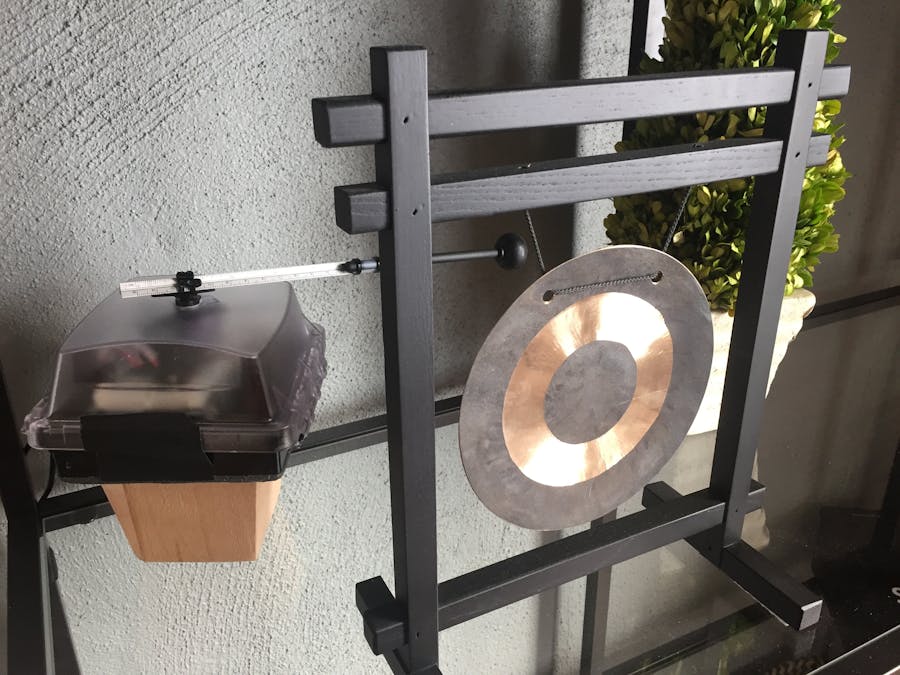GongPi
Rings the gong in the Envoy office every time we make a sale.
Requirements
- RPi GPIO library
- PIGPIO library
- Web.py
- Raspberry Pi (we used Adafruit Raspberry Pi Rev. B+)
- Internet connection (wired or wireless)
- Servo on GPIO pin 4
- One LED on GPIO pin 22
Instructions
Note: These are very loose instructions to help get you started. This guide won't cover the basics of electronic wiring, Raspbian (the Raspberry Pi flavored Linux distro), and setting up a server to send webhooks from.
- Install Raspbian Wheezy – I recommend using NOOBS (linked) because it's easier.
- Use the
raspi-configmenu to change the default password and set your time zone. Don't skip this step. - Once at the command prompt, run
apt get updateandapt-get upgradeto update your base system. - Run
apt-get install git - Clone the repo
git clone git@github.com:OutrageousLabs/gongpi.git -
sudo mv rc.local /etc/rc.local– this overwrites the default rc.local with one that runs the required scripts on boot. - Install PIGPIO – this gives us a Python library to easily control the servo.
-
easy_install webandeasy_install simplejson -
Try running
sudo python stripe.py– it should return the following:http://0.0.0.0:8080/ _If so, your webserver is now running and listening for incoming webhooks. You can test if incoming webhooks are correctly interprereted by running the following from your machine (not the Pi):
curl -d '{"type":"charge.succeeded"}' [PI's IP ADDRESS]:8080The LED should start blinking, and your servo should activate.
stripe.pywill print text in the console, and output an access log tostripe.log. Restart your Pi
sudo shutdown -r now- When the Pi reboots, it will automatically start the network monitor (which will auto-reconnect WiFi if disconnected),
pigpiod, and thestripe.pyserver.








Comments
Please log in or sign up to comment.